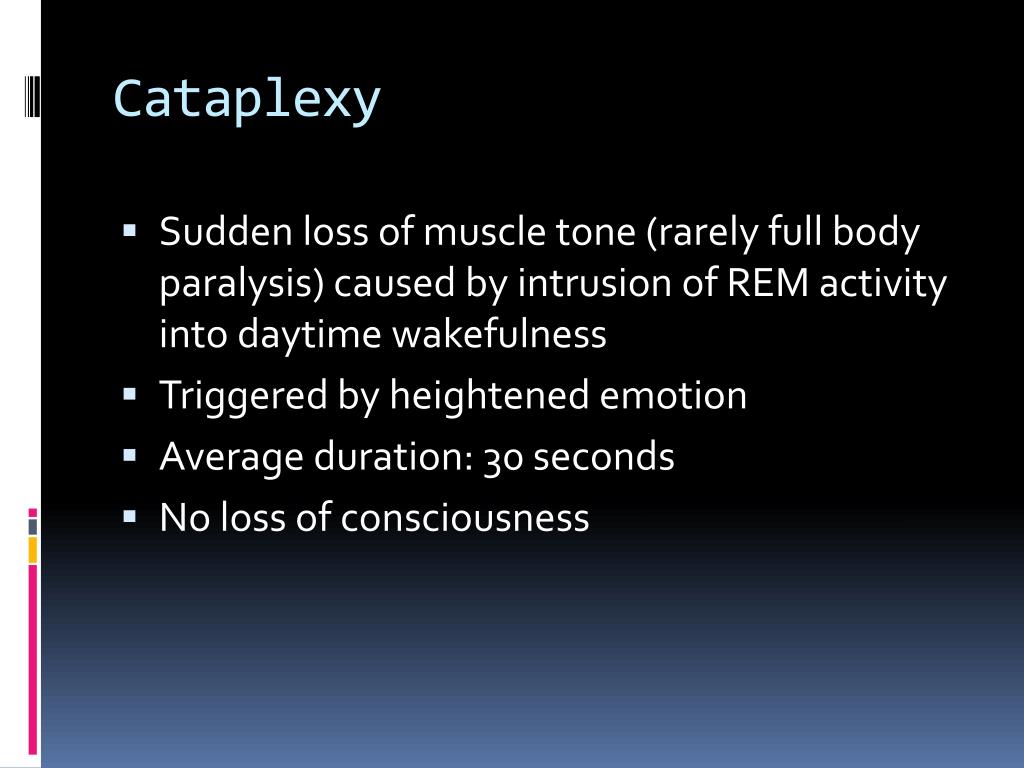

Sleep-onset REM periods (SOREMPs): REM periods that occur within 15 minutes of falling asleep also referred to as shortened REM sleep latency.

Sleep latency: time needed to fall asleep.Includes 5 opportunities for the patient to nap during the daytime and measures :.Daytime multiple sleep latency test (MSLT).In type 2 narcolepsy: characteristic findings on a sleep study without cataplexy or reduced hypocretin levels.OR low CSF hypocretin-1 ( orexin A) levels.
#CATAPLEXY DEFINITION PLUS#
≥ 1 episode of cataplexy PLUS characteristic findings on a sleep study. Daily periods of excessive daytime sleepiness for ≥ 3 months AND. Order sleep studies to confirm the diagnosis and refer to sleep medicine. Assess for cataplexy based on patient history and third-party reports. Recommend a sleep log for 1–2 weeks and/or actigraphy. Consider using a sleep questionnaire, e.g., the Epworth sleepiness scale. Rule out other causes of EDS, e.g., insufficient sleep, obstructive sleep apnea, or other sleep disorders. Hypna go gic hallucinations occur while going to sleep. Other : : depression, obesity, impotence or low sex drive, headaches, decreased functional performance. Automatic behavior: During narcoleptic episodes, patients often perform routine repetitive tasks automatically without conscious awareness of their environment. Hypnopompic hallucinations: experienced while waking up (less common than hypnagogic hallucinations). Hypnagogic hallucinations: vivid, often frightening visual or auditory hallucinations that occur as the patient falls asleep. Sleep paralysis: Complete p aralysis occurs for 1–2 minutes after waking or before falling asleep (either during a nocturnal or narcoleptic sleep episode, i.e., begins or ends with REM sleep). Usually resolves within a few seconds, at most two minutes. Typically manifests as partial cataplexy: isolated weakness of distinct muscle groups (e.g., neck muscles weaken and head tilts forward). The loss of muscle tone is similar to that observed during REM sleep. Typically manifests months or even years after EDS. Cataplexy : sudden muscle weakness in a fully conscious person, triggered by strong emotions (e.g., laughing, crying). One of the earliest manifestations of narcolepsy. Excessive daytime sleepiness ( EDS ): Affected individuals experience an irresistible urge to sleep and s udden, short sleep attacks ( < 30 minutes ), which may occur in inappropriate situations (e.g., while driving a car).






 0 kommentar(er)
0 kommentar(er)
